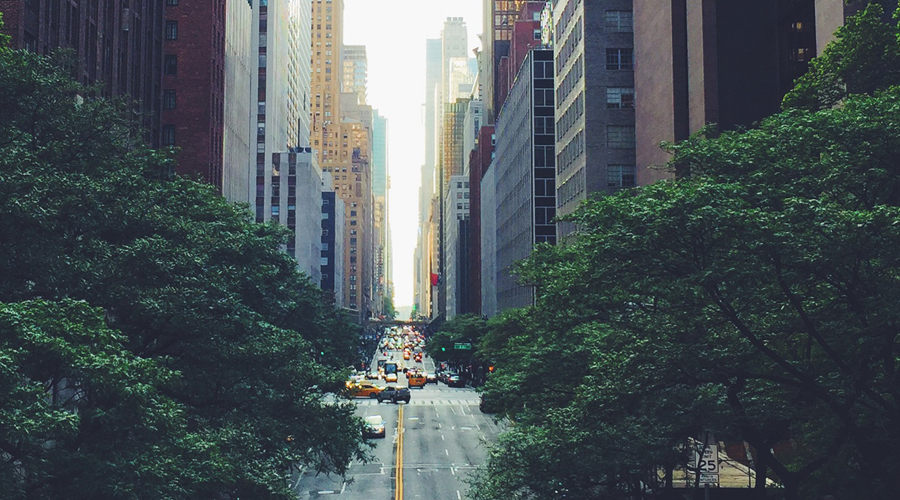Environmental Challenges

Fighting Climate Change
In the past nine years, New York State has repeatedly been the victim of massive flooding caused by momentous storms. In 2005 one storm alone caused 13 inches of rain in the Hudson Valley alone. In 2006, flooding occurred in 13 counties around the state. In 2011, Hurricane Irene struck and while its impact was not as severe as expected in New York City it caused enormous damage throughout the State. And now we are still recovering from 2012’s Superstorm Sandy, whose impact devastated our City and fundamentally changed our ideas on the infrastructure necessary to withstand super-storms. Climate change is having a dramatic impact on our state, and if the storms we have seen in the last few years are any indication of what is to come, we need to commence serious conversations on how we are going to adapt to these changing realities.
Climate change has caught up to us in a real way. Rising sea levels and the destruction of wetlands that have served as natural barriers to the coast have left New York extremely vulnerable to the impacts of our changing climate. I am humbled by the way that this community and those around the city came together after Superstorm Sandy. As it is often said, New Yorkers are at their best when things are at their worst. I think that New Yorkers throughout the state are resilient in good times and bad, but we must work to do everything possible to combat global warming and reduce its impacts. We cannot afford to invest in policies that increase the impacts of climate change or the risk of new catastrophes, and must do whatever possible to enhance the State’s energy efficiency and access to renewable energy sources and rebuild our wetlands and other natural storm defenses.
Banning Fracking
As global energy consumption continues to soar, policymakers and private industry have begun investigating and investing heavily in alternatives to traditional energy sources. Unfortunately, much of this investment has been woefully misguided, as it has focused on a reliance on natural gas accessed through the process of high-volume hydraulic fracturing, otherwise known as “fracking.” The possibility of fracking being allowed in New York State is incredibly concerning; the negative effects of fracking on public health, the environment, and infrastructure have been well documented in the states where it has already been introduced. Some communities in New York have already reported feeling the effects of ongoing fracking in Pennsylvania. Currently, there is a statewide moratorium on fracking while the Health Department studies its health effects. It is more important than ever that we make this moratorium permanent by passing an outright ban on fracking. I have worked tirelessly with my colleagues to enact a ban, and while we face a formidable opponent in the natural gas industry, will work until we win this fight. The health and wellbeing of all New Yorkers depends on it.
Investing in Renewable Energy
The focus on natural gas and fracking is especially vexing given the promise of renewable energies like wind and solar power. While natural gas, like other fossil fuels, is a finite resource, wind and solar power won’t deplete. If New York aggressively invests in these and other renewable energy sources, they can also be an economic boon – there is the potential for the state to become a source of energy innovation, growing an industry that will bring with it both jobs and economic growth for a long time to come. I will continue to support the State’s incentive programs for renewable energies, that help businesses, schools, and individuals offset the costs of installing the equipment needed to utilize renewable energy. I will also advocate for the State to invest more heavily in wind technologies – it has been projected that New York’s wind resources have the potential to provide up to half of our energy, and they should be better utilized while protecting habitat and migratory birds. Site selection will be crucial and new designs for wind turbines should be utilized. The State should also be investing in companies and individuals that have feasible, innovative proposals for new energy alternatives.
Making Buildings More Energy Efficient
Given the density in New York City, it’s essential that new buildings are designed to be as energy efficient as possible, and that we work to modify existing buildings to enhance their energy efficiency. Luckily, the State and City have invested in a myriad of financial incentives for developers to encourage them to build green, and builders have begun to realize that it is in their own interest to make their buildings efficient, as it lowers their energy and water costs down the line. There has also been investment in projects like green roofs, which add gardens or other vegetation to roofs in order to utilize rain water and reduce problems from its runoff; it also helps insulate buildings. Making a building more energy efficient can be as simple as painting the roof of a building white, as I helped do through the Sierra Club’s Cool Roofs Initiative – white roofs reflect the sun, keeping buildings cool and lowering their energy consumption by as much as 10%. Moving forward, I will work with my colleagues and other stakeholders to ensure that these energy saving strategies are expanded.

